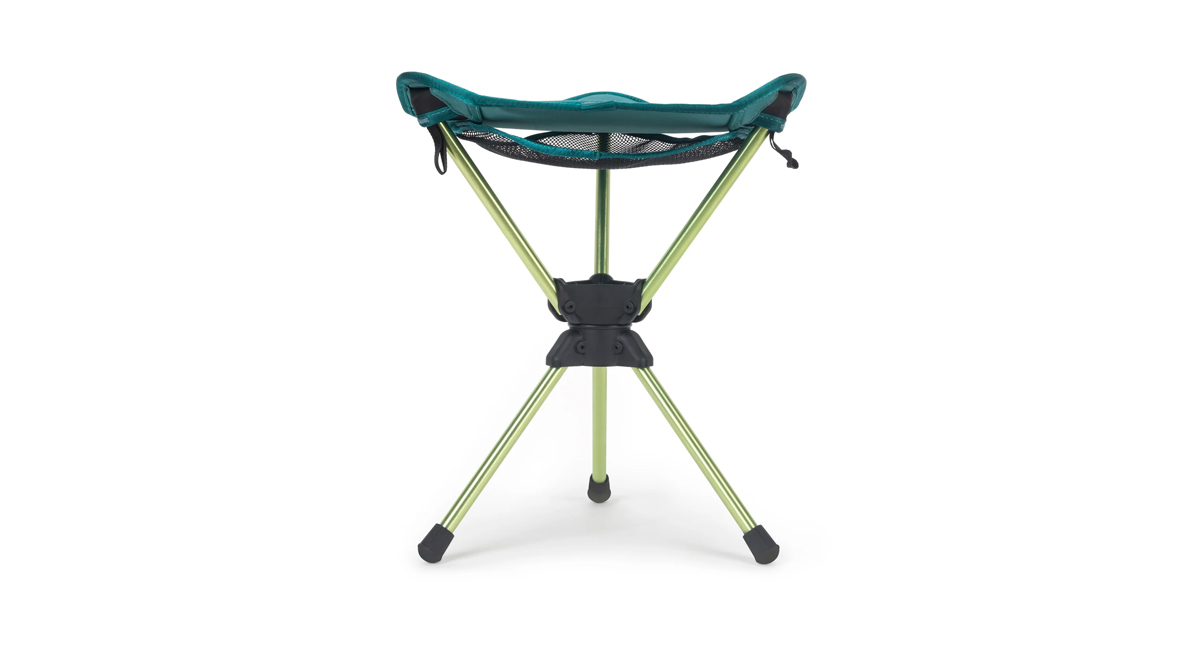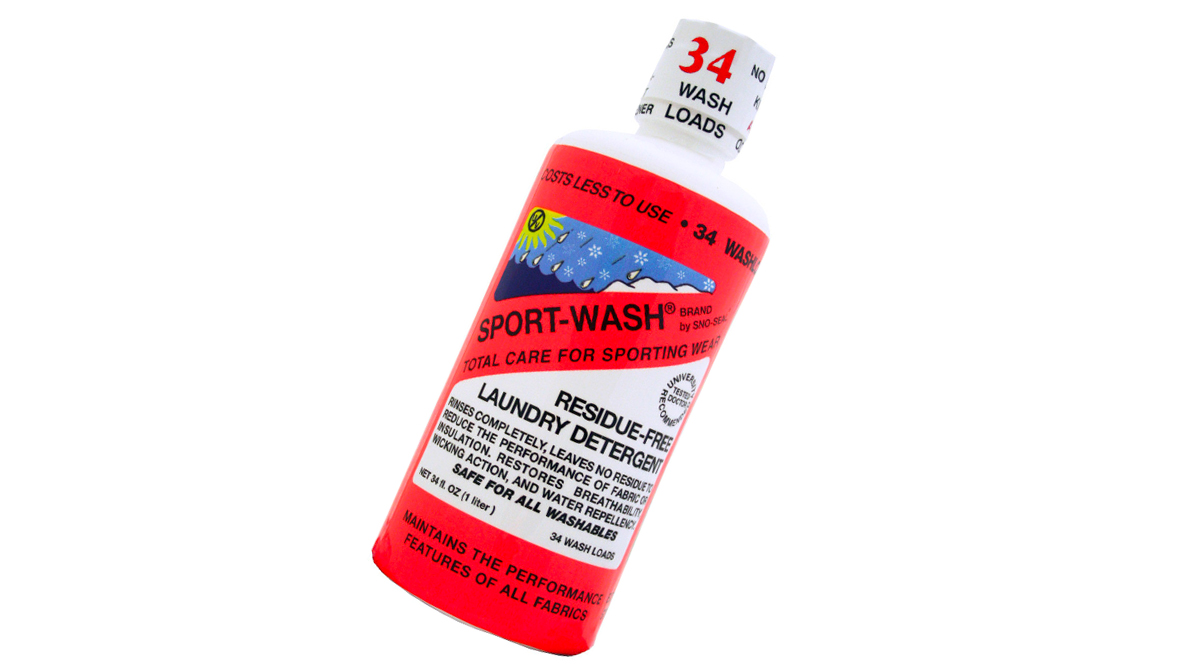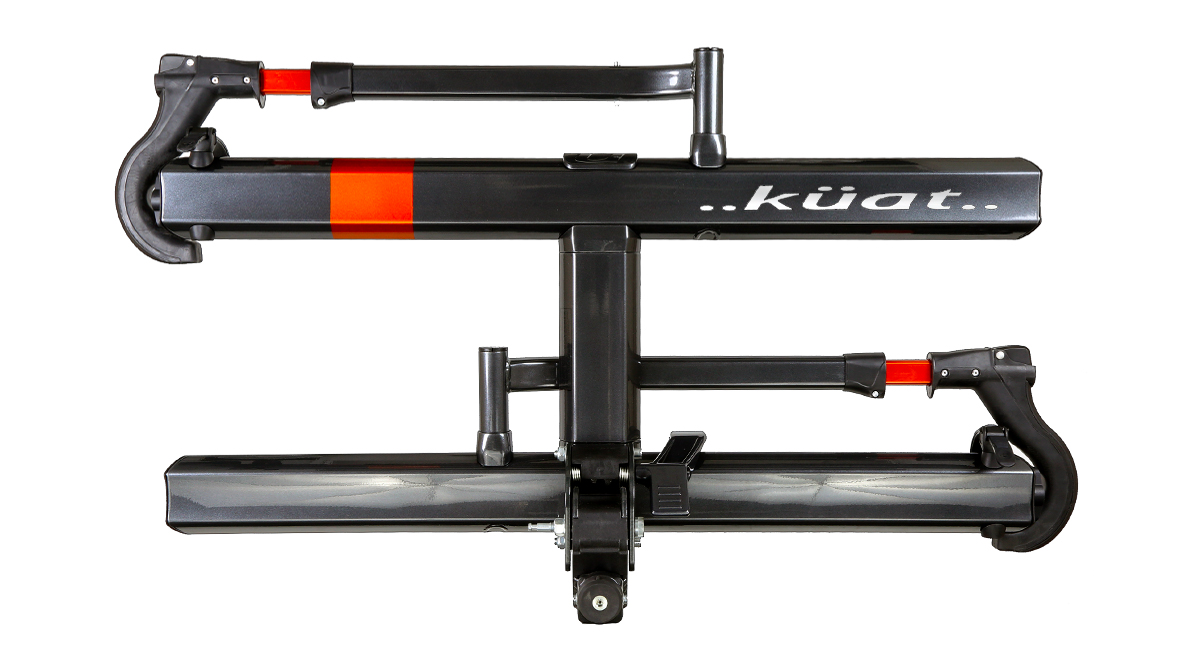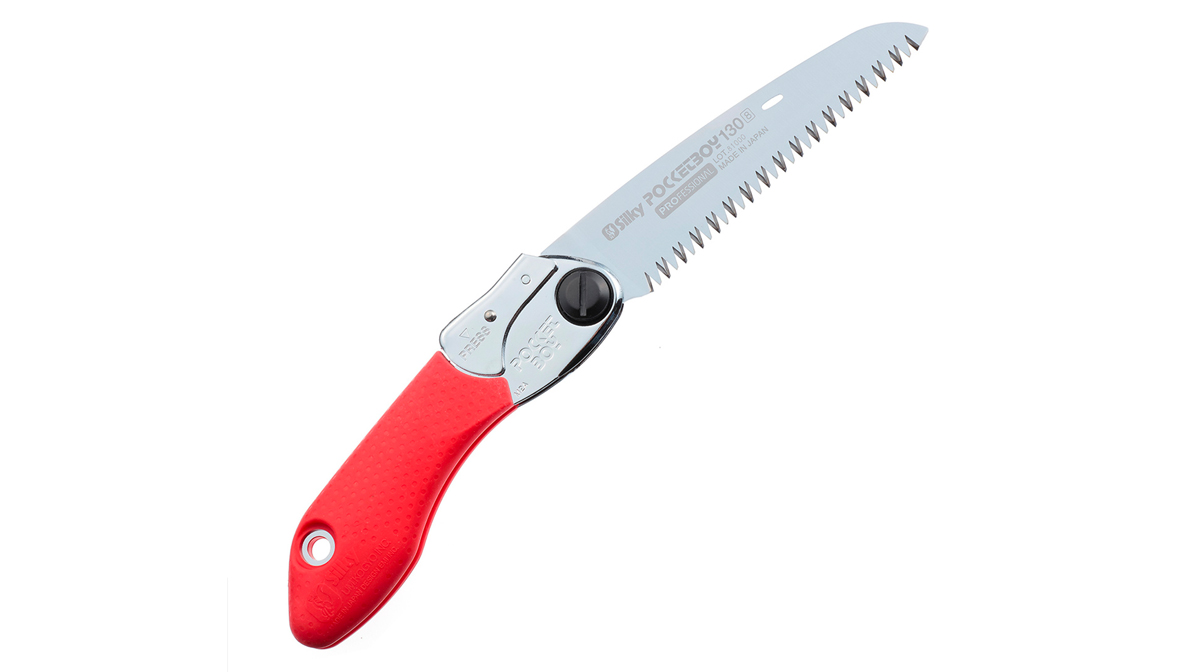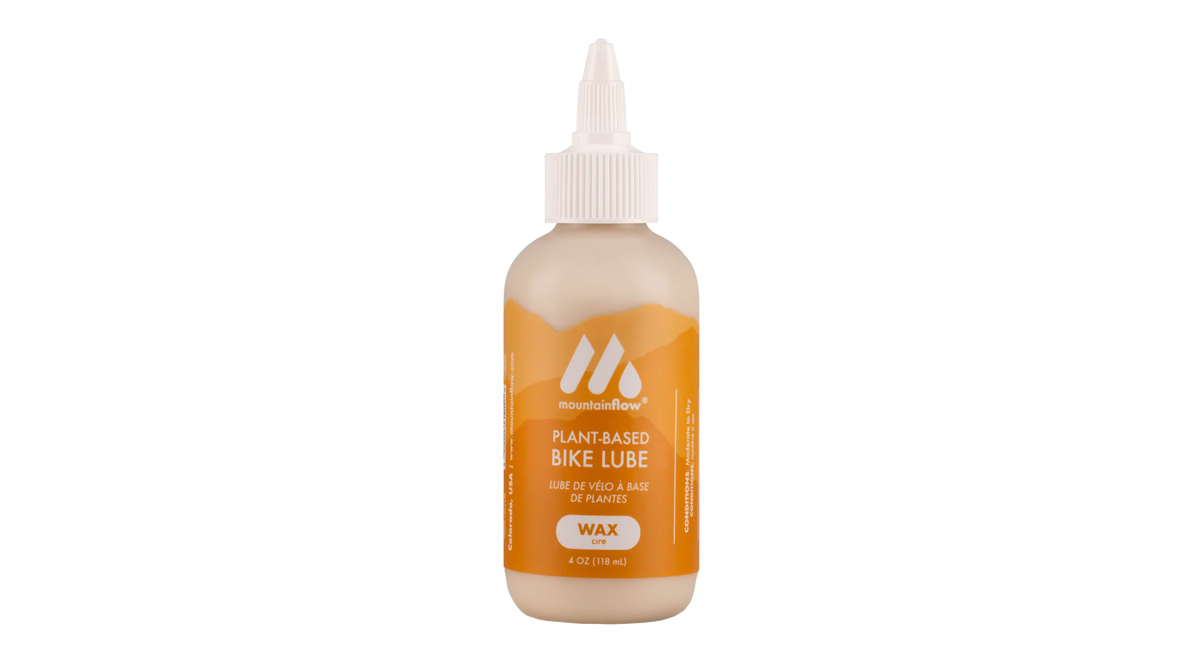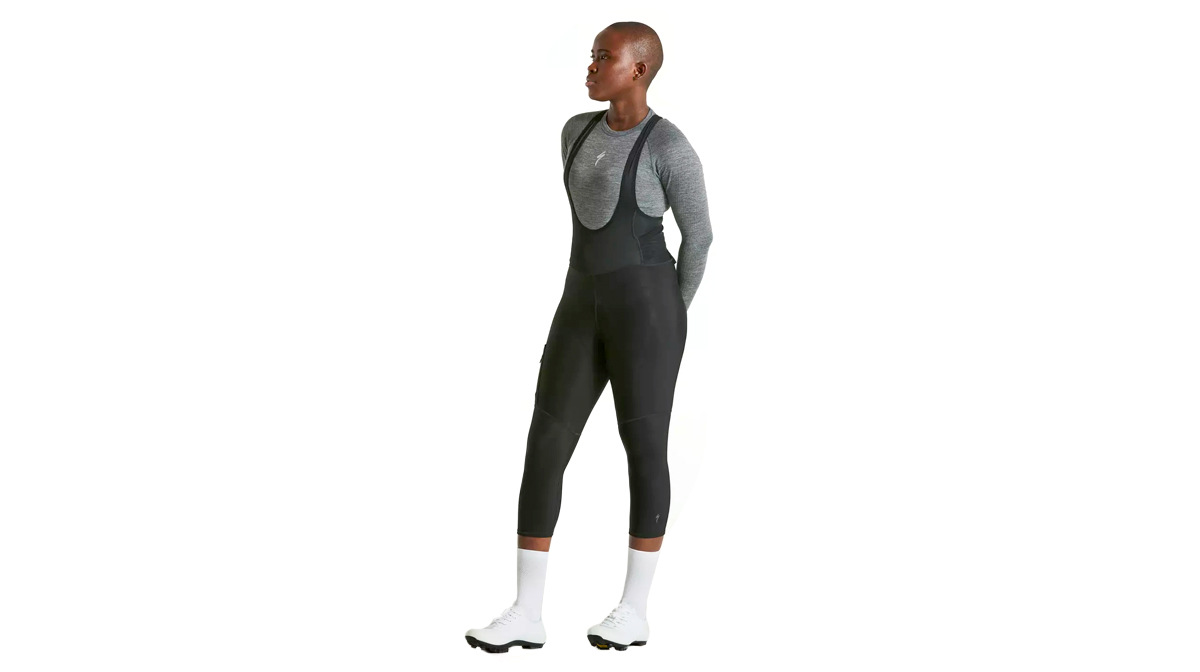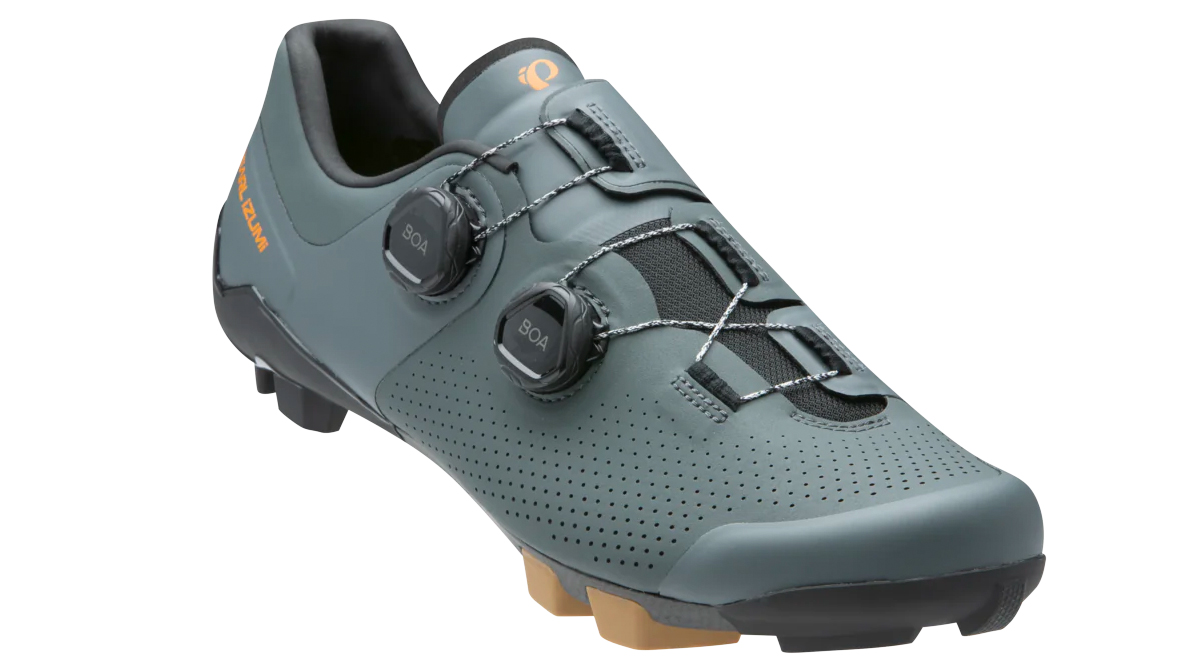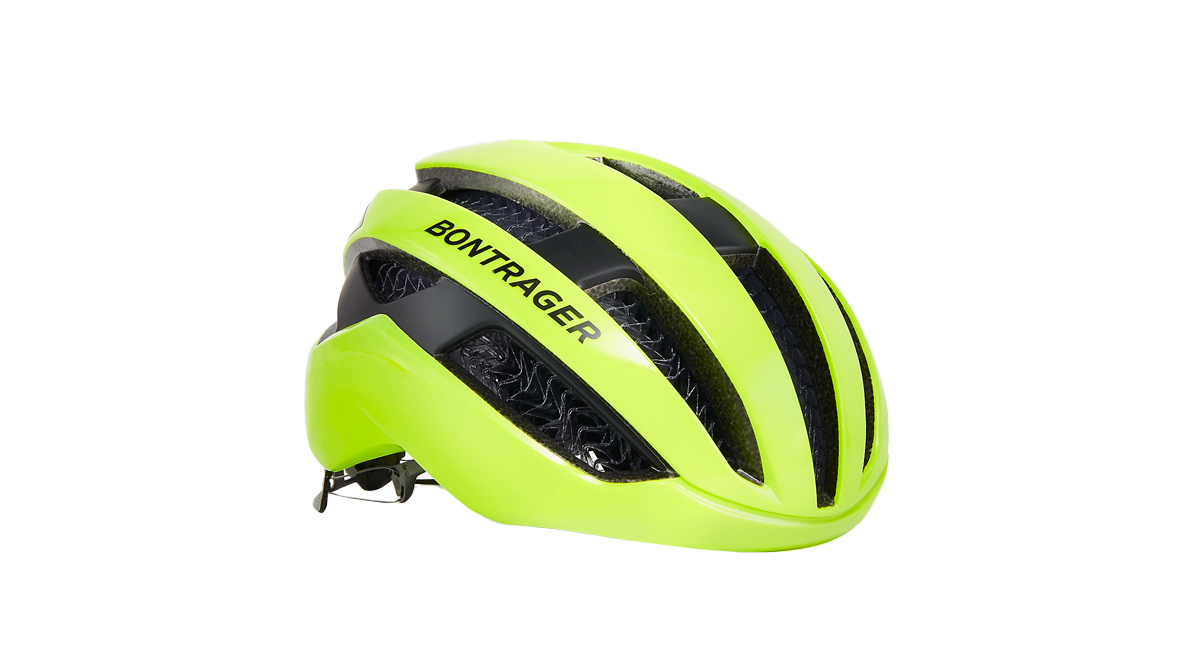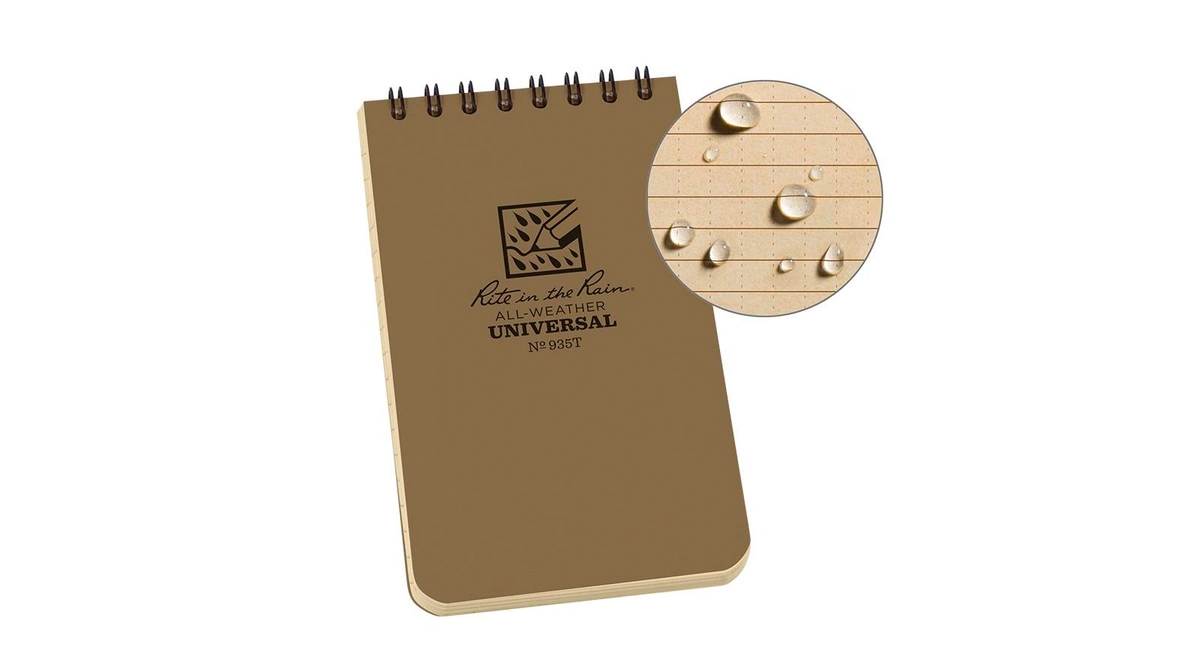Geared Up: Is it Still Winter?
Grand Trunk Compass 360° Stool, $60
The Grand Trunk Compass 360° Stool is not the lightest camp stool out there, nor is it the smallest, most packable stool. But it does have a nifty gimmick that those other camp stools do not: it swivels! Not only that, but it also has a mesh pocket underneath the seat, and the carry bag has a strap so you can sling it on your shoulder or carry it around your waist. It weighs one pound, and it actually does pack down pretty small.
The swivel function may seem gimmicky at first, but trust me, you don’t know what you’re missing. Once you have the power to swivel at will, it’s hard to go back to a non-swiveling stool. Strange noise behind you? Swivel! Smoke from the campfire changes direction? Swivel! Clouds part above your campsite to reveal a breathtaking view of the Milky Way? Swivel to take it all in! The only limit to the Compass 360° Stool is your own imagination. –Dan Meyer
Atsko Sport-Wash Residue Free Detergent, $3.82/4oz.
Synthetic fabrics get stinky over time, and the sweat smell doesn’t always wash out with regular laundry detergent. So I’ve started to wash my bike clothing with Atsko’s Sport-Wash instead. Made for hunters who need to be scent-free, Sport-Wash gets the stank out, as well as blood, grass, and other stains. There are no brighteners or fragrances, so when your laundry goes through the rinse cycle, the detergent fully washes out and there’s no remaining residue that could clog the pores of your technical fabrics hampering their functionality. Sport wash has never dulled any fabric I washed with it, and it doesn’t damage delicate fabrics. It’s phosphate-free for minimal environmental impact. It’s also hypoallergenic. If other detergents irritate your skin, try this one because it washes out completely so there’s nothing left to make your skin itchy. And it’s super affordable. Available in travel size (4oz.), and 18, 34, and 64oz. bottles. –Berne Broudy
Küat Sherpa 2.0 Hitch Rack, $629
Having used all kinds of different bike racks the last couple of decades, I have yet to find a more convenient and secure way of mounting a bike to my vehicle than a hitch rack, and Küat’s Sherpa 2.0 is a great example. For this review, Küat sent me a rack sized for a 2.0in. receiver, but it’s also available in 1.25in. Using the included instructions and occasionally referring to the video on the Küat website, I found the rack easy enough to assemble with my mediocre mechanical skills. If you’re buying one from your local bike shop, they can put it together for you. When you’ve got the rack in one piece and you’re ready to slide it onto your vehicle’s receiver, the real beauty of the Sherpa 2.0 becomes apparent: this thing is light. Küat claims 32 pounds; my bathroom scale showed 31, which is pretty darn good for a rack with an 80-pound capacity (40 pounds per bike). I’m much more likely to take the rack on and off with the seasons and depending on my needs if I don’t need to worry about throwing my back out.
Küat offers a range of hitch racks, and it’s worth pointing out that, at $629, the Sherpa 2.0 is among the more affordable models. Therefore, it has some limitations compared to the more expensive racks, such as capacity: the Sherpa can take two bikes, but that’s all. You can’t attach a two-bike add-on like you can on the spendier models. The trade-off is that the Sherpa is significantly lighter. Another limitation is tire width: the Sherpa can fit 3.0in. tires max — although even 2.8in. tires are pretty tight, based on my experience — so if you’re looking to ferry your fat bikes, you’ll need to look elsewhere. And if you have a mountain bike with an exceptionally long wheelbase, you may have trouble fitting it on the Sherpa. Küat claims a maximum wheelbase length of 1193mm (I found that my Revel Rascal, with a wheelbase of 1220mm, fit just fine).
Limitations aside, the Sherpa 2.0 is no bare-bones model. Construction is a mix of aluminum and plastic, but even the plastic bits feel sturdy and proved they could take abuse (as with most review gear, I wasn’t nice to it). Unlike a lot of hitch racks, the Sherpa has a svelte, understated look to it, and it doesn’t stick out too far when stowed in the up position. Moreover, the hitch lock uses the same key as the included cable lock, both of which I found very handy; a cam can be adjusted by hand to keep the rack tight in the receiver and eliminate sway; and the foot-actuated lever lets you lower the rack when your hands are full. If you have kids (or ride BMX bikes), it includes adapters for 20 to 24in. wheels. But best of all, the Sherpa is the most stable, secure rack I’ve ever used. Whether I was carrying road bikes, mountain bikes, or something in between, the bikes never interfered with one another and nothing ever came loose. Because I’m paranoid, I would check the bikes whenever I stopped on long road trips, and never was anything less tight than when I’d started. Even carrying bikes with racks and fenders was no problem. Simply put, the Sherpa is rock solid.
I did manage a little booboo to the rack, for which I blame myself. We’d gotten some early snowstorms here in Utah, and I hadn’t yet taken the rack off for the winter. I was letting my car warm up outside before I headed out for some November powder turns, and the heat from my tailpipe melted a couple of holes into the hook end of the ratchet arm closest to the vehicle. I learned a couple of lessons from this little misadventure: one, don’t idle the car with the rack on; two, if you’re gonna idle the car with the rack on, consider pivoting the rack into the down position so the hook is farther from the tailpipe; three, if you’re worried, you can have a diverter installed to keep exhaust from going straight at your rack; and four, the ratchet arm is plastic and therefore prone to melting, so maybe some heat reflective tape would help too. At any rate, the potential for a similar problem will differ from vehicle to vehicle, and Küat offers replacement ratchet arms for a measly $40 if you make the same mistake I did. –DM
MPOWERD Luci Base Light – Mobile Charging + Power Bank, $60
There’s never enough daylight for those first and last camping trips of the year. These shoulder seasons can be rough for many reasons, but this lightweight solar lamp and charger has been a help. Due to the off-camber angle of the sun, I’ve fussed a bit with finding the right angle to get the solar panel facing as much direct light as possible, and for that reason I wish there were more straps built into the light so I didn’t need to cover part of the solar panel depending on how to carry it. The best options I found were using the bungee straps on top of my panniers or saddlebag, or tucked into the map pocket on top of my handlebar bag. When fully charged (you can pre-charge using an electric outlet before heading out, then keep the power filled using the sun), this light can charge a phone while keeping your picnic table lit up for those evenings that last longer than the sun, or the mornings that come too soon even when the sun takes a while to crest the mountain. While less ideal, I’ve used this lantern on “high” as a flashlight/headlamp while walking to the loo, but this lantern really shines as designed, giving a soft light to whatever you’re trying to see without a glare or bright, distracting light, no matter the light setting (and keeping your phone charged enough to solve your morning Wordle is nice too). The MPOWERD Luci Base Light and other MPOWERD products are available through Cyclosource, but this review is independent. –Carolyne Whelan
Silky Pocketboy 130 Folding Saw, $41
As an adventurous traveler prone to wandering off the beaten track, I sometimes encounter blocks in the road. I’m talking about actual, physical blocks, such as downed trees. Silky’s compact Pocketboy has helped me clear the way more than once. It’s also been a key tool for cutting kindling for campfires, blanks for spoon carving, and more. Light, compact, and extremely efficient, the 6oz. Pocketboy has a 5.12in. chrome-plated, taper-ground blade with electrical induction non-set hardened teeth. Translation: it’s really sharp, it stays really sharp, and it cuts through wood shockingly fast. It’s small enough to tuck into any pack or pannier, even a hip pack. The folding Pocketboy has a rubberized handle that has never slipped when I was using the saw. It’s a tiny package with generations of Japanese engineering. For trail clearing and campfire wood cutting, I got the Pocketboy with large teeth. Silky sells it with medium and fine teeth too, as well as extra fine, fine, medium and large teeth replacement blades. Consider other teeth sizes for finer work, like woodworking or pruning. –BB
mountainFLOW Eco-Wax Chain Lube, $16/4oz.
I won’t go long here on the purported environmental benefits of products from brands like mountainFLOW — if that’s not important to you, I figure it’s not my job to convince you. But I can try to convince you about the other benefits. For one, mountainFLOW — questionable capitalization practices aside — makes a fine wax-based lubricant. Mind you, I hadn’t used a wax lube since I lived in Minnesota many years ago and had to deal with mud (not much mud here in Utah). But the Eco-Wax chain lube is clean, easy to use, and doesn’t stink up my workshop like the petroleum-based products I usually put on my chain. It takes longer to apply because I drip it on each chain roller one at a time, but it doesn’t leave a mess on the floor. Once applied, it’s recommended to wipe off any excess and let dry for five minutes before you ride. From my experience, it’s best to wipe off as much as you can and then spin the crank a few times after those five minutes. More than once, I’ve lubed a chain as per the instructions, and then when I hopped on the bike and started pedaling, the wax was so solidified that the chain was sticky. But once I got rolling, the chain loosened up just fine.
With all that wax dried onto the chain, it’s possible that my drivetrain is a little less efficient — not that I’ve performed any experiments to test that theory. I have, however, noticed that my shifting is a little slower with the Eco-Wax lube. But I’m not racing, so a tiny drop in efficiency and shift speed isn’t a deal breaker. What does matter is how much cleaner my chain stays with the Eco-Wax. It’s recommended for moderate to dry conditions, and mountainFLOW claims it works best in dry, dusty conditions, which is exactly what I have here in the great state of Utah. With the other (petroleum-based) lubes I’ve used, I have to wipe off and re-lube my chain after every ride, especially on my mountain bikes. With the Eco-Wax, I can go several rides on my road bikes without paying any attention to the chain; on my mountain bikes, I can do a few rides on each application as long as I wipe the chain down after every ride. And best of all, I can sleep better at night knowing that I’m not killing the planet by using dead dinosaurs to lubricate my bike chain (sorry, it just slipped out).
I can’t speak for how well the Eco-Wax works in wetter climates, but for the dry, dusty roads and trails I ride in the Wasatch Mountains, it’s earned a permanent spot on my workbench. –DM
Specialized Adventure Thermal Bib Knicker w/ SWAT, $220
I’ve spent many years making short bibs work for me in colder months by adding wool tights over top — this inevitably leads to less-than-ideal sagging in the tights around my waist as they fail to grip on the slippery Lycra, but it works well enough to keep my legs protected from the harsh bite of Montana winter. The Specialized Adventure Thermal SWAT Bib Knicker is a decent option if you’re looking to invest in longer thermal bibs. The pants have a soft, fuzzy thermal lining that was sufficient for me in temps down to 32°F, but I really wish they were just a bit longer. The non-grippy cuffs don’t dig into my skin, which is awesome, but once I start riding, they ride up a little to hit about three inches above my sock line, leaving that skin exposed to the cold. Additionally, the chamois is comfortable, but I have to really hike the bibs up for it to sit right next to my body, which doesn’t help the short leg problem. The thing these bibs get right is the number and placement of pockets — pockets galore! Specialized developed the SWAT system to keep essentials “off your back and onto your body,” and the pockets are all designed in a way that reduces significant shifting as you ride, which makes you almost forget you’re carrying anything at all. The big pocket that sits on the upper-right side of my quad is perfect for holding a phone with quick access for mid-ride navigating or photo snapping. I’ve also stuffed a pair of gloves in there, and while that was a bit bulky, it was nice to not have to dig around on my back when I wanted to put them back on. There’s a tiny zip pocket on the outer layer of the quad pocket for flat things like an ID or credit card. For longer rides, the SWAT system includes three back pockets for extra storage under your jersey. While I’m hesitant to recommend buying these at full price, they’re currently marked down 50 percent on Specialized’s website, which is a sweet deal. These fit me true to size, though some online reviews say they run a bit small, so reference their size guide for help. Available in XXS–XXL, in women’s and men’s. –AM
Pearl Izumi Expedition Pro Shoes, $260
A super-stiff, Boa-laced gravel shoe, the Expedition Pro is the first carbon-sole shoe I’ve worn that isn’t awkward to walk around in. Built to have the stiffness of a road shoe and the durability of a mountain bike shoe, the Expedition Pro is perfectly rockered. So when I had to hoof it up a hill, it wasn’t awkward, and I got all of the energy transfer benefits of a carbon-soled shoe. Pearl Izumi designed this shoe for long rides and hot weather, perforating the synthetic leather in the toe, and from the toe to the midfoot on the outside of the shoe. A padded tongue and padded heel pocket gave the shoe a custom-feeling fit, and, along with seamless construction, eliminated possible pressure points. Boa laces also helped with the superb fit. On long rides, as my feet swelled, I could micro-adjust both the forefoot and midfoot zones of this shoe for comfort. On the flip side of the shoe, the carbon sole is covered with a scuff-resistant rubber layer that didn’t trap mud or rocks but still had enough lugs to help me walk up steep, loose slopes when I couldn’t ride them. It’s a carbon-soled shoe for maximum energy transfer, but it’s one made for cranking out the miles whether you’re racing or out for fun. –BB
Bontrager Circuit WaveCel Helmet, $160
With every helmet brand coming out with its own proprietary tech these days, it’s hard to keep track. WaveCel is Bontrager’s answer to the endless parade of safety technology intended to prevent serious head injuries in a crash. In place of traditional foam inside the helmet, WaveCel is a collapsible cellular structure, sort of like a crumple zone in a car. But instead of simply crumpling to absorb an impact, Bontrager says that the WaveCel structure also flexes and glides, similar to the now-ubiquitous MIPS slip plane, to reduce the kinds of impacts that are thought to contribute to concussions. I’m not here to validate Bontrager’s crash claims; “crash test dummy” is nowhere to be found in my job description.
I found the Circuit’s fit to be on the big side: mediums usually fit me just fine, but this one rode pretty low on my head, and I had to crank the BOA dial all the way in. Wearing a cap under the helmet improved the fit, but only a little. I recommend visiting your local Bontrager dealer to try one on. Other than the fit, I liked the Circuit a lot. The BOA dial is easy to use with one hand, the straps are comfortable, and the shell is well ventilated. Better yet, the Circuit is compatible with Bontrager’s Blendr mount system, meaning you can buy lights that attach magnetically to the helmet. Bontrager sent the lights along with the helmet for testing, and I found them to be a perfect addition for commuters or anyone riding in the dark. The front light attaches to a GoPro-style mount that snaps into place on top of the helmet and feels very secure, even when riding off-road. The rear light was a little fussier, in my experience. It was easy to mount it slightly off plumb, causing it to fall off when hitting a bump. Even when mounted properly, it doesn’t feel quite as secure as the front light.
With the WaveCel crumple zone and slick light attachments, the Circuit is a solid choice for road riding, commuting, or for your next tour. And if you do find yourself working as a crash test dummy during your first year of owning this helmet, Bontrager will replace it for free. –DM
Rite in the Rain All-Weather Notebook 835, $5
Historically, I’ve packed my journal in a plastic bag when I tour to keep it from getting wet. But that bag often gets torn or worn, which has left my journal soggy and stuck together. The bag also makes it awkward to stash my journal in a pocket where I can reach it easily. Rite in the Rain’s All-Weather Notebooks eliminate the need for a plastic bag. The spiral-bound 50-sheet, 100-page notebook has waterproof pages that won’t stick together. It’s my favorite journal for bike touring because it’s compact, light, and my words and drawings don’t wash away if it gets left on a picnic table in a rainstorm, or if sweat on it. For riders with compact handwriting and concise observations, the 3x5in. spiral-bound notebook is perfect. If you want more space, Rite in the Rain notebooks also come in 4×6, 6×9, and 8.5x11in. With the 3x5in., I have the choice of 15 colors and patterns, as single notebooks and three-packs, so each trip can have a distinct cover. The wire doesn’t get crushed easily, the plastic cover doesn’t tear off, and the back of the notebook has handy inch and centimeter rulers. Writing on waterproof paper is similar to writing on regular paper, whether you’re using a pencil, a permanent marker, or a ballpoint pen. –BB
